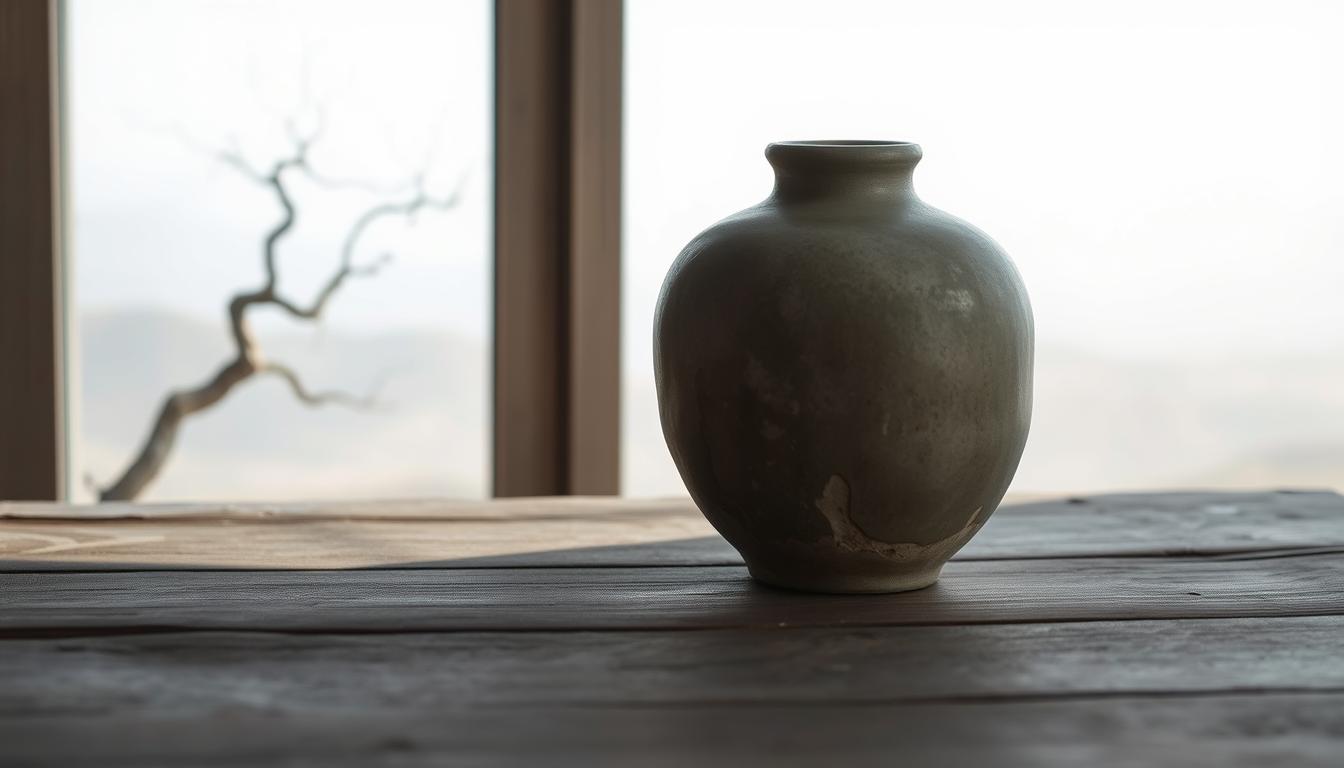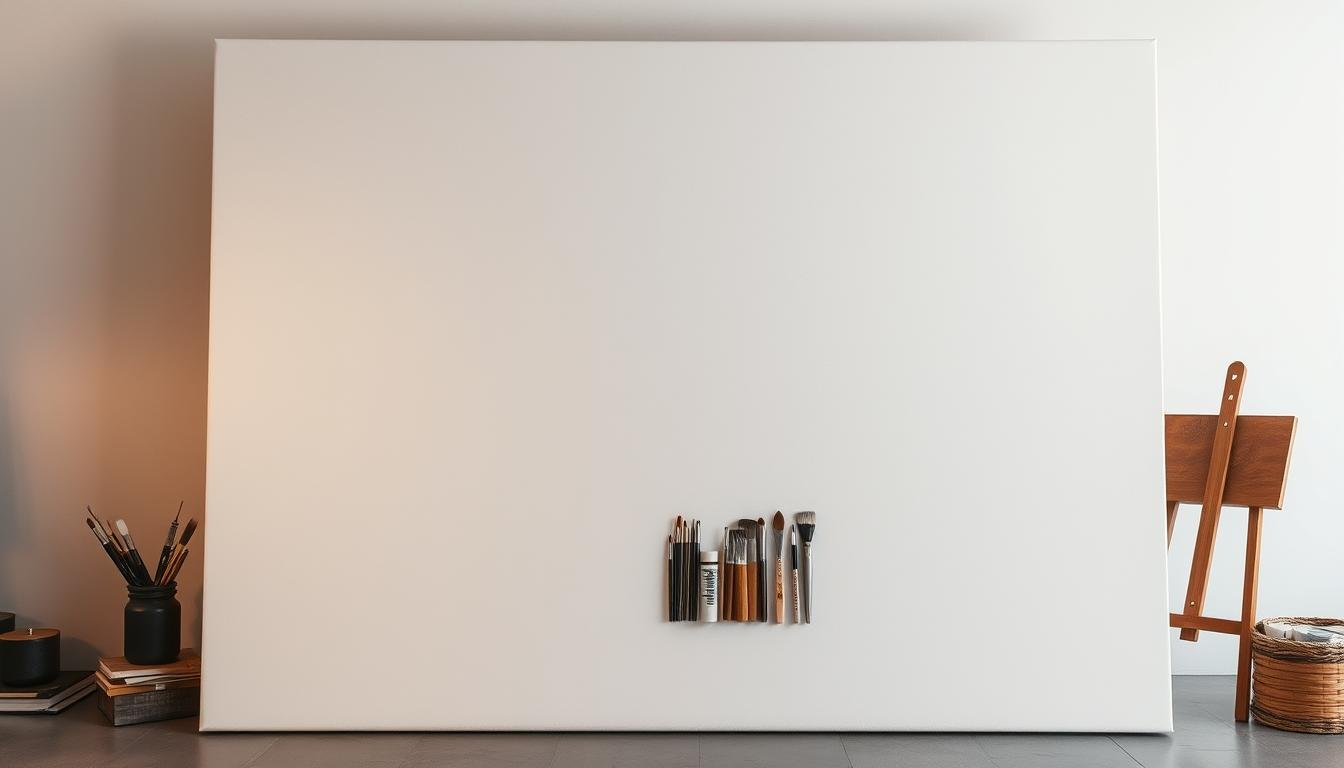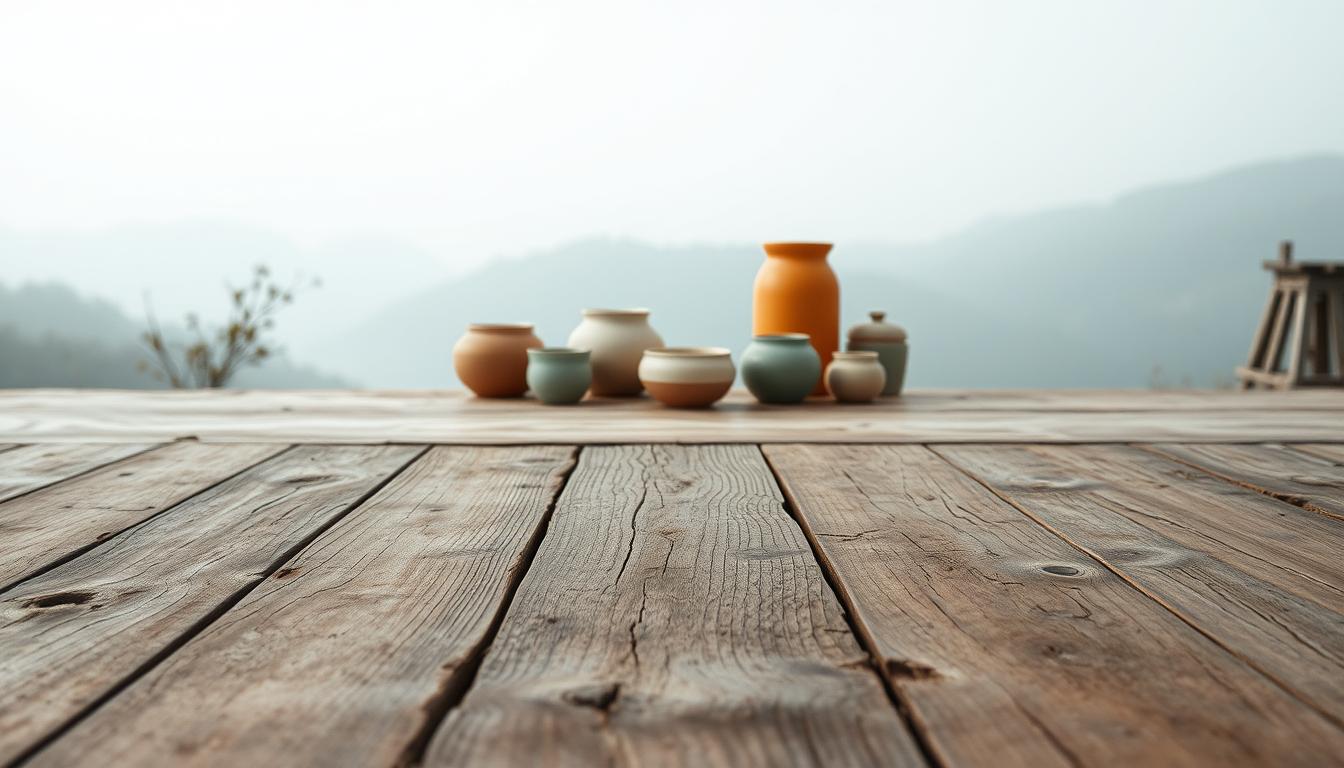Can a chipped bowl teach you to see beauty in flaws? This simple question flips a common belief: beauty need not be perfect or new. It invites you to slow down and notice small, honest things in daily life.
Wabi-sabi is a warm, approachable Japanese philosophy and aesthetic rooted in Zen and the tea ceremony. Its three pillars—Imperfection, Impermanence, and Incompleteness—guide how we value objects, art, and even life choices.
The history shows humble tea bowls with uneven shapes and wear being cherished for character. Crafts like Kintsugi celebrate "golden scars" by mending pottery with precious metal. Today, this way influences interiors, handmade goods, and a simpler approach to design.
This guide will explain each principle and offer clear examples from art and everyday life, plus step-by-step tips to bring wabi-sabi into your home. You don’t need a perfect space—just a willingness to notice and honor real, lived-in beauty.

Key Takeaways
- Wabi-sabi highlights Imperfection, Impermanence, and Incompleteness as core ideas.
- It grew from Zen and the Japanese tea ceremony, valuing humble, irregular objects.
- Kintsugi shows how repair can add visible, meaningful beauty.
- Adopting this way helps you slow down and appreciate everyday art and craft.
- No lavish purchases needed—focus on natural materials and simple choices.
- Practical tips ahead will show how to apply these ideas in design and life.
- Learn more about how these ideas shape art and living here: what are the three principles of wabi-sabi
What Is Wabi-Sabi? A Friendly Primer on a Japanese Aesthetic
Wabi-sabi invites you to slow down and notice the quiet charm in everyday objects.
From Zen roots to everyday life: accepting imperfection
Wabi-sabi is a japanese aesthetic and philosophy that finds beauty in simple, lived-in things. It grew from Zen ideas about presence, mindfulness, and gentle acceptance. In tea ceremony history, uneven tea bowls show how patina and touch add worth.
Wabi and Sabi explained simply
Wabi points to humble simplicity and honest materials that feel close to nature. Sabi honors the quiet depth time brings: soft wear, faded color, and calm meaning in an object.
- Mindful choices in design and daily life help rooms feel calm and true.
- Natural textures—wood, clay, stone—and shifting light guide aesthetic decisions.
- Wabi-sabi is not neglect; it is careful care and attention to small details.
Notice how a single, well-loved bowl or a faded textile can add warmth and presence to life.
What are the three principles of wabi-sabi?
Three core ideas explain why worn, odd, or unfinished objects can hold deep meaning.
The three principles are Imperfection, Impermanence, and Incompleteness. Each principle gives a different lens for seeing value in simple things.
Imperfection: finding beauty in flaws and asymmetry
Imperfection honors irregular forms, visible brushstrokes, and handmade variation. These marks show human touch and authenticity.
Impermanence: honoring change, time, and wear
Impermanence treats time as a collaborator. Patina, fading, and layered wear tell a piece’s story and celebrate transience.
Incompleteness: leaving space for interpretation and growth
Incompleteness favors suggestion over full explanation. It invites the viewer to take part and add meaning.
- How they work together: an uneven vessel softened by years of use feels open-ended and alive.
- Mindset shift: flaws become features that add emotional resonance and a lived sense of story.
- Quick home lens: choose items with character, welcome aging, and resist overfinishing details.
Which idea resonates with your daily life, and what small ritual could honor it?
| Principle | Key sign | Home tip |
|---|---|---|
| Imperfection | asymmetry, cracks, visible craft | display one handmade item openly |
| Impermanence | patina, fading, layered wear | let wood age; avoid protective coatings |
| Incompleteness | suggestion, open forms, quiet gaps | leave negative space in displays |
Read more on how these ideas connect in practice: a short guide to the three.
Imperfection: Beauty in Flaws, Irregularity, and Authenticity
Visible tool marks and rough textures tell a maker's story and create instant warmth. Imperfection is a guiding lens that helps us choose objects with personality rather than polish. It invites a closer look and a slower pace.
Design cues
Look for asymmetry, raw edges, and handmade surfaces. These cues signal human touch: uneven silhouettes, slubs in textiles, or a slightly wobbling bowl.
Kintsugi mindset
Kintsugi repairs broken pottery with lacquer dusted in gold. Cracks become visible "golden scars" that honor repair, history, and resilience. This approach reframes damage as a feature, not a flaw.
How artists and designers reveal character
Artists and designers often leave brush marks, tool paths, and uneven glazes to show process. Materials like clay and hand-turned wood reveal patterns—finger ridges, grain shifts, small variations—that add authenticity.
- Choose tactile art: textured canvases, pottery with slight wobble, textiles with knots.
- Seek irregular patterns that invite touch and focus the eye on subtle beauty.
- Journal about an object's "golden scars" to name its story and feel more connected.
| Visual Cue | What it Shows | How to Use at Home |
|---|---|---|
| Asymmetrical silhouette | Human shaping, uniqueness | Place one handmade piece as a focal point |
| Visible repair (Kintsugi) | History, resilience | Display repaired pottery where light catches the seams |
| Tool marks & textures | Maker's process, authenticity | Choose shelves that allow close viewing and touch |
Impermanence: Time, Transience, and the Patina of Use
Soft patina and worn edges invite you to read an object's lifetime like a quiet diary.
Impermanence asks us to honor change over time and to welcome the marks that use leaves behind. Surfaces with layered texture signal transience and give a calm, lived-in beauty.

Materials that age well
Wood gains warmth as oils and light deepen grain. Clay develops burnish and subtle sheen. Stone softens at edges, and natural fibers relax and fade.
Composing with gentle change
Use faded dyes, rubbed edges, and low contrast palettes to evoke a contemplative mood. Weathered finishes echo nature and add quiet contrast in design and art.
"Patina is not damage to hide, but a record to read."
- Why they shine with age: materials gain depth and character as they wear.
- Notice shifts: morning light on a worn table, a cup's smooth rim, or a faded throw.
- Care tip: maintain rather than erase — light oil on wood or gentle cleaning preserves character.
- Seasonal refresh: swap textiles or branch arrangements to follow nature's cycle without full redesign.
| Material | How it changes | Practical care |
|---|---|---|
| Wood | Warms, develops richer grain | Light oiling; avoid harsh polish |
| Clay | Subtle burnish; deeper color at touchpoints | Handle gently; avoid sudden temperature shifts |
| Natural fibers | Softened weave; faded dyes | Rotate textiles; gentle wash; air dry |
Living with change lowers stress. Expecting wear lets you use things freely and find small moments of beauty each day.
Incompleteness: Simplicity, Space, and Open-Ended Work
Open space in a room can act like a pause in music—letting notes breathe. Incompleteness is one of the three core ideas that invites suggestion rather than full explanation.
This principle favors restraint and calm composition. Minimal arrangements and negative space ask the viewer to join the story. That invitation deepens attention and gives a stronger sense of presence.
Leave room for the viewer: suggestion over explanation
Small, unfinished gestures in art—an implied line or a faint wash—encourage personal interpretation. The result feels alive and intimate.
Practicing restraint: fewer elements, more presence
- Define incompleteness as an intentional pause—hint instead of spelling everything out.
- Let space let the eye rest; this boosts attention to texture and tone.
- Try simple edits: remove one object, simplify color, and trust natural materials to carry the scene.
- Rotate objects seasonally and leave open shelves to cultivate calm and clear ideas.
"Not every corner needs a statement; sometimes quiet space says the most."
Daily practice: sit with one simple object for a minute and notice how its beauty grows. That small habit brings more presence to life.
How to Apply Wabi-Sabi at Home and in Design
Bring gentle edits to a room so each object can breathe and tell its story.
Start with clear intent. Let the three core ideas guide choices: pick items that show human touch, accept natural change, and leave room for suggestion. Use small steps so changes feel natural to life and design.

Declutter to essentials: kanso-inspired simplicity
Remove extras and keep objects that add real beauty or meaning. This kanso-style edit makes space for texture and tone.
Curate natural materials and organic forms
Choose wood, stone, clay, linen, and other materials that age with grace. These materials bring a sense of nature indoors and reward use over time.
Display with intention: asymmetry, negative space, gentle flow
Compose groups asymmetrically and leave breathing room on shelves and walls. A gentle visual flow moves the eye without clutter.
Choose handcrafted art: visible brushstrokes, irregular edges
Prefer pieces that reveal process—textured grounds, uneven edges, and obvious handwork. Such choices add authenticity and a direct link to artists and makers.
- Mix surface ages: pair a new textile with an aged table to create thoughtful contrast.
- Embrace small repairs as features—golden scars and mending stitches tell stories.
- Use quiet palettes and soft contrast so materials and patterns can speak.
- Rotate objects seasonally to refresh space without buying more.
| Action | Why it helps | Practical tip | Related principle |
|---|---|---|---|
| Declutter to essentials | Reduces visual noise; highlights meaning | Keep 5-7 meaningful items per shelf | Incompleteness |
| Choose natural materials | They develop depth and warmth with use | Select wood, clay, stone, and linen | Impermanence |
| Display asymmetrically | Adds life and a calm flow | Group odd numbers; leave negative space | Imperfection / Incompleteness |
| Pick handcrafted art | Signals human touch and authenticity | Look for visible brushwork and texture | Imperfection |
Beyond the “Big Three”: How other Japanese aesthetics support wabi-sabi
Complementary aesthetic threads bring extra meaning to simple objects and quiet rooms. These related tastes expand the sense of value that sits beside the core ideas. They come from tea rituals, garden making, and long craft history.
Asymmetry and quiet order
Fukinsei praises purposeful imbalance. It shows up in tea bowls and rock gardens and asks the viewer to lean in. That small visual tension deepens appreciation and ties to imperfection.
Simplicity, age, and naturalness
Kanso strips away the nonessential so form reads clearly. Kōko honors austere dignity and the quiet value of old surfaces. Shizen keeps objects sincere and free from pretense.
Mystery, freedom, and stillness
Yūgen prefers suggestion over full explanation, letting beauty linger beyond sight. Datsuzoku invites gentle unpredictability and new patterns. Seijaku brings calm, a still pause that highlights texture and tone.
"These aspects reinforce authenticity, patience with time, and thoughtful restraint."
| Aspect | Core effect | How it supports value |
|---|---|---|
| Fukinsei | Asymmetry | Deepens engagement with imperfect forms |
| Kanso / Kōko | Simplicity & aged dignity | Clarifies essence; honors decay and time |
| Yūgen / Seijaku | Hidden depth & stillness | Invites reflection and slow attention |
Conclusion
Letting items age and breathe reshapes how people see beauty in their rooms.
Imperfection, Impermanence, and Incompleteness offer a practical way to design, make, and live. They ask for care, small repairs, and honest choices that add true value.
Notice one simple moment each day: light on a textured wall, a softened handle, a mended seam. These small acts build appreciation and bring more calm into life.
Try one tidy step today: declutter a shelf, repair a favorite object, or rotate a few natural materials. Replace the chase for perfection with steady work that honors time and authenticity.
With gentle practice, ordinary objects gain meaning and your space will feel quieter, truer, and more alive.
FAQ
What is wabi-sabi in simple terms?
Wabi-sabi is a Japanese aesthetic that values simplicity, naturalness, and the beauty in imperfection and time-worn surfaces. It invites quiet appreciation of modest materials, weathered textures, and objects that show age or repair.
How do imperfection, impermanence, and incompleteness relate to design?
Those core ideas guide decisions like choosing handcrafted ceramics, leaving negative space, and accepting patina on wood or metal. Designers use asymmetry, raw textures, and restraint to create calm, honest spaces that feel lived in and authentic.
Can wabi-sabi be used in modern interiors?
Yes. Blend natural materials—wood, clay, linen—with simple furniture and gentle color palettes. Favor objects with subtle flaws or visible craft marks and arrange items with breathing room rather than cluttering surfaces.
What is a Kintsugi mindset and how does it fit?
Kintsugi is the practice of mending broken pottery with gold lacquer, celebrating scars rather than hiding them. As a mindset, it honors repair and history, turning flaws into focal points that deepen an object's story.
Which materials best express this aesthetic?
Wood, stone, unglazed clay, linen, hemp, and hand-blown glass age gracefully and reveal time’s passage. These materials develop patina and texture that reinforce a sense of authenticity and warmth.
How can I start practicing wabi-sabi at home without a full redesign?
Begin small: remove excess items, spotlight one handmade piece, embrace a chipped bowl, or let sunlight play on natural fibers. Focus on slowing down and noticing details instead of chasing perfection.
Is wabi-sabi the same as minimalism?
They overlap in valuing simplicity, but wabi-sabi emphasizes warmth, texture, and the beauty of imperfection. Minimalism often pursues strict reduction and symmetry; wabi-sabi accepts irregularity and human traces.
How do artists apply these ideas in their work?
Artists use uneven brushstrokes, incomplete compositions, and tactile surfaces to invite interpretation. They favor suggestion over full resolution, letting viewers complete the story with imagination.
Does wabi-sabi have roots in any philosophy or practice?
It grew from Zen Buddhist thought and traditional Japanese crafts, where simplicity, humility, and attentiveness to nature shaped aesthetic choices and daily rituals like the tea ceremony.
Are there other Japanese aesthetics that support this view?
Yes—concepts like kanso (simplicity), shibui (subtle beauty), and sabi (the beauty of aging) complement wabi-sabi. Together they encourage restraint, depth, and quiet elegance in art and life.




Leave a comment
This site is protected by hCaptcha and the hCaptcha Privacy Policy and Terms of Service apply.